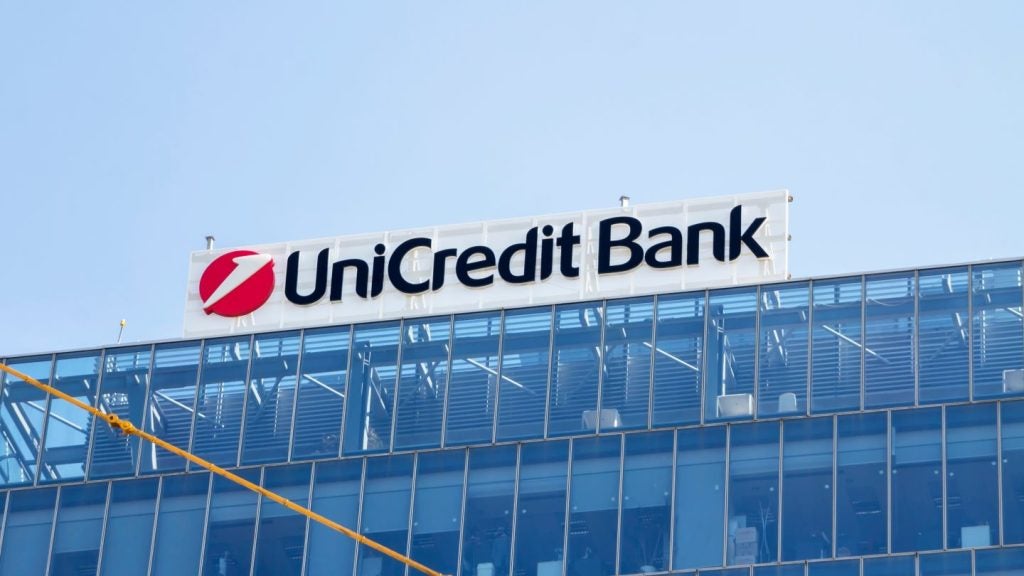Challenger banks are no longer the disruptors; fintechs have risen to offer lending products and deliver processes in new and faster ways. Saad Ahmed speaks to Peter Thomas of the Leasing Foundation, Lindsay Town from IAA-Advisory, and Adrian Reeve of YesGrowth about the leasing industry’s response
“A lot of people, when they hear ‘fintech’, I think, immediately go to areas like blockchain and bitcoin, sending them down completely the wrong avenue, as to what it means for us,” Lindsay Town, chief executive officer of IAA-Advisory tells Leasing Life.
A decade ago, when the financial crisis began to erupt, challenger banks were seen by some as the saviour of small businesses. Swooping in to lend when the Big Four would not, banks that have since become big names made their start lending to SMEs during troubled times. The financial landscape has changed considerably since then, and challenger banks are no longer the new kids on the block.
Financial technology companies – commonly known as fintechs – emerged and have begun to operate in the same markets as many challenger banks and other financial institutions. The result of this is a major disruption in the asset finance space.
At Leasing Life’s annual conference in Paris in November last year, the phenomenon of fintech was never far from the speakers’ lips. As the industry looked to the future and sought to define itself, an encroaching raft of digitally focused, technology-based fintechs further embedded themselves into the financial world, bringing with them novel approaches and processes.
Half a year later, many of the same questions remain. The challenge for lessors is to determine whether fintechs are a threat or an opportunity, and how they might respond to a changing technological landscape. Leasing Life speaks to leasing industry insiders and fintechs to assess the scale of the challenge, and how the industry can respond.
“Clearly, we are in a disruptive period,” says Peter Thomas, executive director of the Leasing Foundation. “You have new entrants that come along, and the effect is disruptive because they do things slightly differently.”
Thomas cites Clayton Christensen’s 1995 Disruptive Innovation Model to explain the effect that fintechs have on the lending landscape. “That theory is panning out, and that is what we are seeing in this market. We have an [entrant] that comes along that identifies a user need or can satisfy it in a different way,” he says.
According to Christensen’s theory, market disruption comes in three main forms: high end, mainstream, and low end. In finance, Thomas says fintechs enter at the low end of the market, the least profitable – and pick up functions that challenger banks may have all but left behind.
“They grab a bit of the market that the incumbents think they do not want to service anymore – typically at the lower end. Then they get a foothold,” he explains.
Advantages
Alternative-funding fintechs have a number of advantages over more traditional banking and asset finance providers – challenger banks included. They are able to be agile and move quickly, and identify where to focus their attentions early on. Challenger banks, though once the insurgents, have become mainstays in the lending space and, due to organisational legacy, are unable to move as quickly. This provides fintechs with an advantage, as speed of service and flexibility are two areas that SMEs and even larger businesses value from a finance provider.
“Flexibility and speed are important to lots of businesses who are looking to finance their assets, and so they will gravitate towards services that will provide them with real or perceived advantages in getting a proposal in and accepted quicker,” Thomas notes.
Adrian Reeve, chief executive officer at YesGrowth, says alternative lending forms a notable part of the fintech spectrum. “The first thing to understand is that fintech describes all sorts of things in terms of payment systems and cryptocurrency, so alternative lending is a subset of fintech,” he says.
According to Reeve, fintechs involved in alternative funding engage with SMEs differently. “In terms of SME funding, the first question that the SME needs to ask is [whether it] needs equity or debt. In terms of how they engage, it is going to be quite different, strategically,” he adds.
He says that some funders, like YesGrowth, provide working-capital solutions to SMEs. “It could be that they want funds from us because a large payment has not paid a bill in an expected time period, and they are left with a cashflow problem. So, working capital plugs the cashflow problem,” he says. Reeve adds that SMEs searching for longer-term funding options may instead gravitate towards peer-to-peer funders.
The interviewees all seem to suggest that it is the SME funding space where fintechs can most encourage competition and disruption. “If we look at how competition is working in the UK market in particular at the moment, where an awful lot of asset finance companies are chasing a similar sector, the obvious battleground in the UK is the SME market,” Town notes.
He adds that, unlike challenger banks, their focus allows them to hone in on certain processes or areas of expertise. In this way, Town says fintechs are not exposed to the same risks as other lenders. “The difference is that they are very careful about which services they want to provide. So what they are not going to do is expose themselves to some of the risk that the mainstream funders would have,” he says.
Reeve adds: “Fintechs are smart at picking up the stuff that is of the most value and least cost for them. So they will pick the functions that they can deliver at the highest margin, and then leave everybody else the risky stuff that is expensive to deliver. They can do that because they pick the bits where the technology does it for them.”
The tech factor
Fintechs pose a challenge within the leasing industry due in large part to their use of technology. As digital natives, fintechs possess the advantage. They are agile, able to move with technological changes, and are imbued with the culture to do so. This not only increases functionality, but also speed and accuracy.
“The alternative lending space [is composed of] new companies that did not exist 10 years ago, using new technology to meet the needs of SMEs. And the result is the process is done quicker, cheaper in terms of the operating costs of the lender, and on a secured basis,” Reeve tells Leasing Life. He believes that SMEs benefit from these technology-driven processes by receiving their funds faster, and in a more secure way.
Technological involvement can come in three main ways, as Reeve explains. “Firstly, technology used at the front end, an online application process, that bypasses the normal human or paper-based channels,” he says. “Secondly, having some form of algorithm or automated assessment process that scores the application and then either agrees a risk profile and price, and/or an offer, or decline. And then thirdly, technology around the onboarding of a client to meet know-your-customer and anti-money laundering regulations.”
Town says that although lessors have begun to better use technology, they prioritise IT resources towards developing an attractive front end. A consequence of this is a swathe of processes which are still completed with a large degree of human intervention, and at considerable length.
“Challenger banks – that a very short time ago seemed like really innovative things – are now looking like the old guard quite rapidly, because the fintechs are operating at a different speed with a completely different view about what happens,” Thomas says.
Adopting technology in larger financial services businesses, such as challenger banks, can be fraught with difficulty. Legacy systems are a major hurdle, particularly in businesses with large IT systems. Thomas explains that old-fashioned processes and ways of operating may be ingrained within the leadership, and in order to fully harness technology, there must be a change.
“A big inhibitor is culture and knowledge; you have to change mindsets. Either the leadership needs to change, to have people in place that see that option, or they need to change their attitudes,” Thomas says, going on to suggest that employees familiar with digital processes could be introduced at a lower level.
Failing to adapt to technological changes could see challenger banks lose out on some SME funding, as requirements for speed – once their calling card – become better served by fintechs involved in alternative lending.
“All those functions in the middle, the underwriting, will start to just be completely automated,” Thomas says. “One of the competitive battlegrounds will be that you can either choose, as a customer, to go with the old-fashioned route or you can choose to get an answer instantaneously. Most people, I suspect, will choose in the end to get the instantaneous answer.”
Competition or collusion?
Fintechs need not spell disaster for existing lenders. One effect of fintechs entering the lending space in a targeted way is that they may perform processes that could enable lessors to complete business faster.
Technology such as online document signing can improve processing speed for lessors, and fintechs that use blockchain and bitcoin may help to price assets.
Thomas rejects the idea that fintechs are in direct competition with lessors for business. He suggests that the word ‘fintech’ is overused, believing they amount to little more than new forms of technology which can be used to make lessors’ processes faster. In this way, Thomas says fintechs are a benefit to existing players.
“Where fintech comes in – or modern technology, to be more accurate – is to help make new and existing players more effective,” he says. “The fintech itself won’t be a lender; it will partner strongly with a preferred lender.”
It is in this indirect way, by improving the processes of an incumbent in the lending space, that Town suggests fintechs could cause lessors to find themselves losing customers to their competitors.
Reeve says that as competition between lenders grows, the market is becoming increasingly commoditised, aided by comparison sites. He argues that rather than competing on price, lessors will compete on speed of service and delivery – and partnering with a fintech is the way they can develop a competitive edge.
He mentions the partnership between Santander and Funding Circle as an example, and says partnering is how lenders can ride the fintech wave to their benefit. Partnerships free existing lenders from having to spend money developing their own solution, or acquiring an existing fintech. In addition, by forging a deal with a fintech, lenders can increase processing speeds, allowing them to serve SMEs faster than their competitors, and gain an advantage in an increasingly crowded market.
The interviewees are not alarmist about fintechs encroaching into the territory of lessors and challenger banks. Thomas explains why there seems to be some panic and confusion among lessors about how to respond to fintechs. “What will happen is the fintechs will enter as intermediaries, and very soon become funders themselves. They will end up having their own book; as the disruptive innovation theory predicts, they will start in one place, and then grab more of the services,” he says.
The initial fear is that, as challenger banks once did, fintechs would enter the lending space with their core competencies at first, but later evolve to include an increasing number of practices, bringing them into competition.
Though as the respondents conclude, fintech, in all its guises, is not a direct blanket threat to the leasing industry. Through partnering with innovative fintechs, SME lenders can improve their processing speed and accuracy, and gain a competitive advantage over their competitors in a crowded funding landscape.







